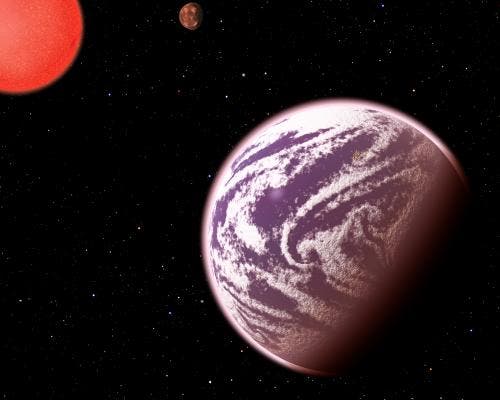A team of astronomers recently discovered a new exoplanet some 200 light years away whose mass is about the same as Earth’s – the first Earth-mass planet that transits, or crosses in front of, its host star. Although very similar in mass, the planet is 60% larger in diameter suggesting it has a thick atmosphere. Due to its very short orbital period, the planet’s surface is most likely scorching hot and, consequently, unfit to foster life.
Astronomers used data from NASA’s Kepler spacecraft, now defunct, to identify the exoplanet KOI-314c, which orbits a dwarf star. Considering the exoplanet is very far away from Earth and it orbits a very faint star, describing KOI-314c in terms of mass and size was no easy task.
Typically, scientists rely on fairly straightforward method for determining the mass of planets outside our solar system that relies on studying wobbles of the parent star induced by the planet’s gravity. This only works accurately for big planets, at least 1.5 times the size of Earth, that orbit bright stars. For KOI-314c, the researchers used a different technique.
A new method for finding low-mass exoplanets
Known as transit timing variations (TTV), the method, which works only for systems with at least two planets, measures the slight tug planets make on each other, that slightly changes the times that they transit their star.
“Rather than looking for a wobbling star, we essentially look for a wobbling planet,” explains second author David Nesvorny of the Southwest Research Institute (SwRI). “Kepler saw two planets transiting in front of the same star over and over again. By measuring the times at which these transits occurred very carefully, we were able to discover that the two planets are locked in an intricate dance of tiny wobbles giving away their masses.”
Thus, the researchers found KOI-314c is only 30 percent denser than water. This suggests that the planet is enveloped by a significant atmosphere of hydrogen and helium hundreds of miles thick. It might have begun life as a mini-Neptune and lost some of its atmospheric gases over time, boiled off by the intense radiation of its star. The team estimates its temperature is 220 degrees Fahrenheit, too hot for life as we know it.
The second planet, KOI-314b, is about the same size as KOI-314c but much denser, weighing about 4 times as much as Earth. It orbits the star every 13 days, meaning it is in a 5-to-3 resonance with the outer planet.
The TTV method was used for the first time in 2010, and these latest findings show that it can be particularly useful when studying low-mass exoplanets. However, it seems to be effective only when discussing systems with multiple planets. For those of you interested, I invite you read about a new exoplanet hunting technique I wrote about a while ago. Called MassSpec, this method employs transmission spectroscopy – concentrating on measuring light from a star passing through an exoplanet’s atmosphere – and is reportedly accurate for studying the mass of exoplanets that are both low mass and orbit a faint parent star.










